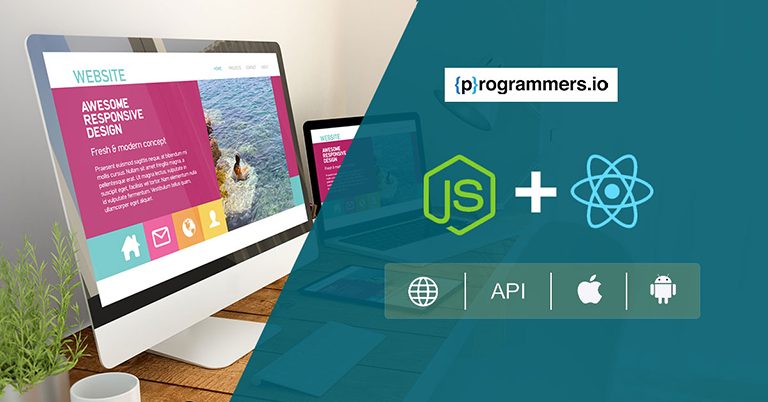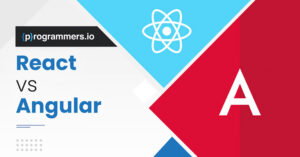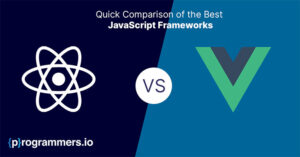What You Need to Know About React.JS Development With Node JS
React.JS has taken the development world by storm, and for a good reason – it’s a fantastic framework. But if you want to use React.JS development with Node JS, there are a few things you need to know.
In fact, React.JS with Node JS is a very effective workflow for creating impeccable applications. Many modern companies utilize the stacked workflow to shape the very interface of our modern communication.
In this guide, we will walk you through the basics of React.JS and Node JS development so that you can get up and running quickly. We’ll also discuss some of the benefits of using these two frameworks together.
So what are you waiting for? Start learning today by reading this article.
What Is React.JS?
React.JS is a JavaScript library for building user interfaces. It lets you create reusable components so that your code is easy to read and maintain.
On the other hand, Node JS is a platform for developing server-side applications. It uses an event-driven, non-blocking I/O model that makes it perfect for creating fast and scalable applications.
What Is Node JS?
Node JS is a platform for developing server-side applications. It uses an event-driven, non-blocking I/O model that makes it perfect for creating fast and scalable applications.
Furthermore, Node JS has a vast ecosystem of modules that you can use to add functionality to your applications.
The Benefits Of React.Js Development With Node JS
When used together, React.Js Development with Node JS makes a powerful development team. Here are just a few of the benefits you can expect:
Faster Development
Using React.JS and Node JS together speeds up development time by allowing you to use one language (JavaScript) for both client-side and server-side development. This eliminates the need to learn multiple languages, a significant time-saver.
Easier Maintenance
React.JS makes code maintenance more straightforward and less error-prone by using reusable components. And because Node JS is perfect for creating fast and scalable applications, you can rest assured that your application will scale well no matter how much traffic it receives.
Better Performance
Thanks to the event-driven, non-blocking I/O model used by Node JS, applications built with this platform run considerably faster than those made with traditional web frameworks like PHP or Ruby on Rails.
So if you’re looking for a robust development framework that’s easy to learn and offers excellent performance, then React.JS and Node JS are worth considering!
How Does React.JS Development With Node JS Work?
React.JS is used to create the user interface for your application. This includes the layout, styling, and interactivity of your app. Node JS is used to handle all the backend tasks – including processing requests and responses, handling database operations, and serving static files.
When you combine React.JS and Node JS development, you get a compelling platform for creating web applications. Your application will be fast, scalable, and easy to maintain – plus, it will look great too!
Furthermore, by using React.JS and Node JS together, you’ll be learning two of the most popular development frameworks out there. This will give you an excellent foundation for future career growth in the field of web development. So what are you waiting for? Start learning today!
How to Optimize Your Workflow When Using the Two?
It’s time to learn how to optimize your workflow when using the two together. Here are a few tips:
Use a code editor with support for both React.JS and Node JS. This will allow you to write code more quickly and easily. Some good options include Atom, Sublime Text, and Visual Studio Code.
Install the Babel compiler plugin for React.JS development. This will let you use newer JavaScript features while still keeping your code compatible with older browsers.
Use NPM (Node Package Manager) to install dependencies for your project. NPM is included with Node JS, so there’s no need to install it separately.
Use a task runner like Grunt or Gulp to automate everyday tasks like compiling JavaScript, minifying code, and linting. This will help you work more efficiently and avoid mistakes.
You can optimize your workflow when using React.JS and Node JS development together by following these tips. And don’t forget – practice makes perfect! So keep working on those projects, and you’ll be a pro in no time!
Common Mistakes Made In react.JS & Node JS Development
Like any other technology, React.JS and Node JS share common mistakes made by developers. Here are a few of the most common ones:
Not Using Modules Properly
When working with Node JS, it’s essential to use modules correctly. Failing to do so can lead to messy code and errors.
Not Using Right Tools
Not using the right tools can also lead to problems when developing with React.JS and Node JS. Make sure you’re familiar with all the tools available to you and use them wisely.
Failing to Optimize Code
Writing efficient code is essential when working with React.JS and Node JS. Failure to do so will result in slow applications that don’t scale well.
Not Following Best Practices
Following best practices is critical when working with any technology. Make sure you’re familiar with the best practices for React with Node JS development and use them whenever possible.
These are some of the most common mistakes in React.JS and Node JS development. By avoiding these mistakes, you’ll be able to write code that’s clean, efficient, and error-free. So don’t forget to practice!
Your Development Done Right
React.Js Development with Node JS can be a bit daunting at first – but with a bit of practice, you’ll be able to write code that’s clean, efficient, and error-free. And by following the tips in this article, you’ll be on your way to becoming a pro! So what are you waiting for?
Contact us now to discover the utility of programmers for your business.
How can we help you?
We have hundreds of highly-qualified, experienced experts working in 70+ technologies.









